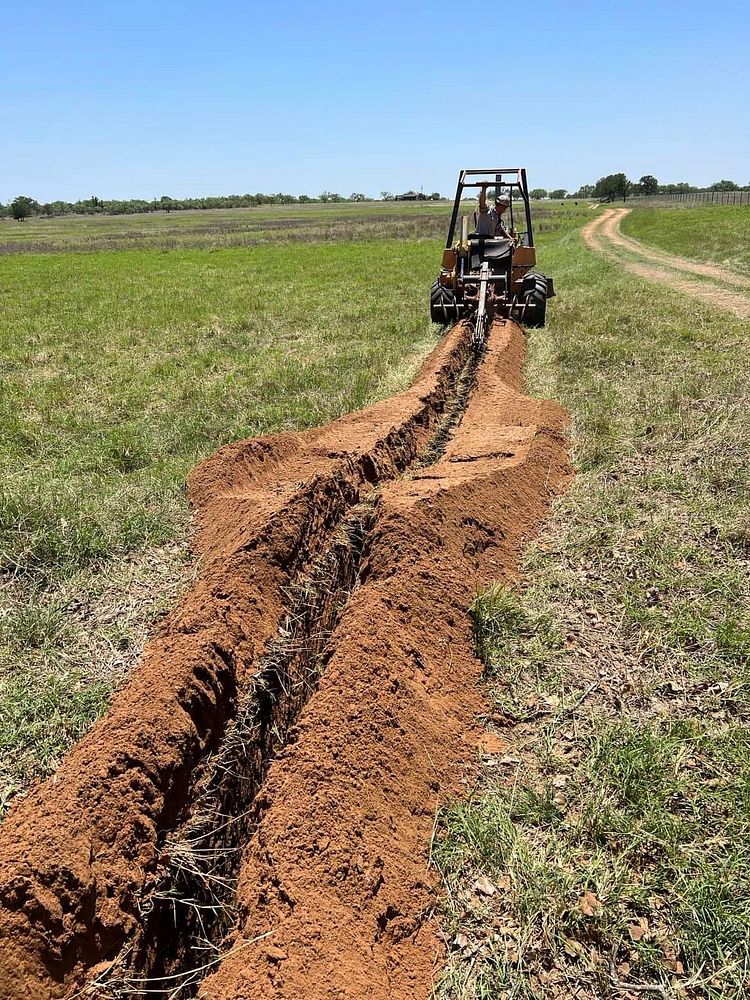https://www.usa.gov/copyrighted-government-workshttps://www.rawpixel.com/image/9654347

Traven Day and Stephen Thornhill begin livestock pipeline installation at the C.G. Merlo Ranch in San Saba, Texas, on June 10, 2022.
The work begins with locating existing water and other utility lines, then making multiple passes of the trencher to dig down where the new water pipe will be buried. Then after the trench and positioned pipe is inspected, it is then buried. The tanks are then set on level ground, and supply and drain lines are installed. A ball float shutoff valve is installed to keep the tank full. If wildlife enters the tank, the ramp provides a way out. Gravel is spread around the tank to reduce soil erosion where the cattle stand to drink water.
Over the years, rancher, landowner, and military veteran Chuck Merlo has participated in several U.S. Department of Agriculture USDA cost-sharing improvement and financial programs. Multiple programs have helped stabilize the CG Merlo Ranch operation during the drought and the pandemic. Through the USDA Natural Resources Conservation Services NRCS, he is implementing the Conservation Practices number 516 Livestock Pipeline, 614 Watering Facility, 382 Fence, and 314 Brush Management. Additionally, the USDA Farm Services Agency FSA has assisted with Coronavirus Aid, Relief, and Economic Security Act CARES and the 2014 Farm Bill's Livestock Forage Disaster Program LFP.
For more information about Livestock Pipline Conservation Practice 516, go to nrcs.usda.gov/wps/portal/nrcs/detail/national/technical/nra/?cid=stelprdb1092538.
USDA Media by Chuck Merlo.
Original public domain image from Flickr
Public DomainFree CCO U.S. Government image for Personal and Business use